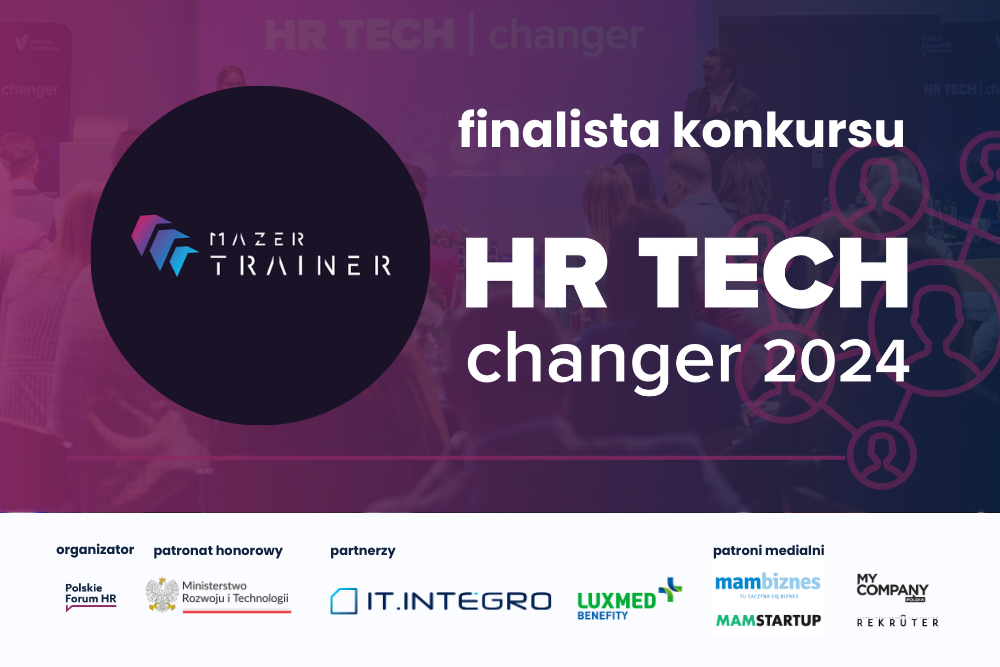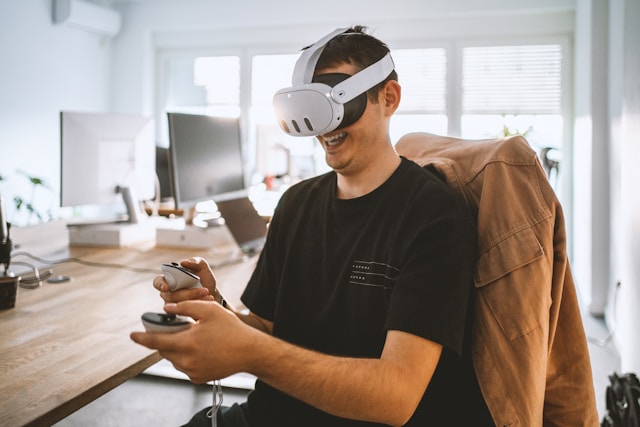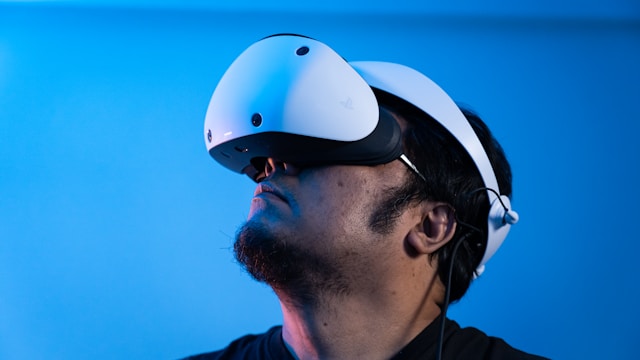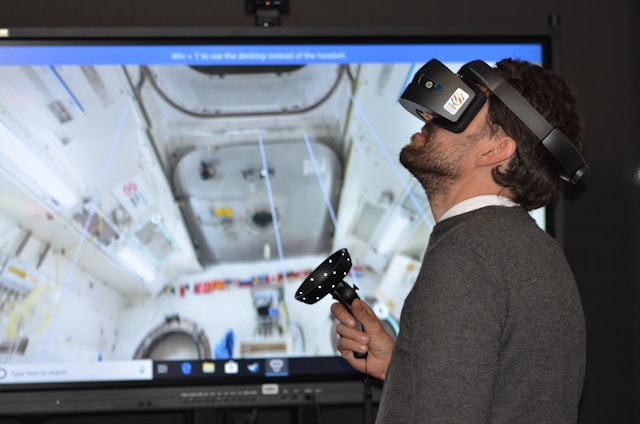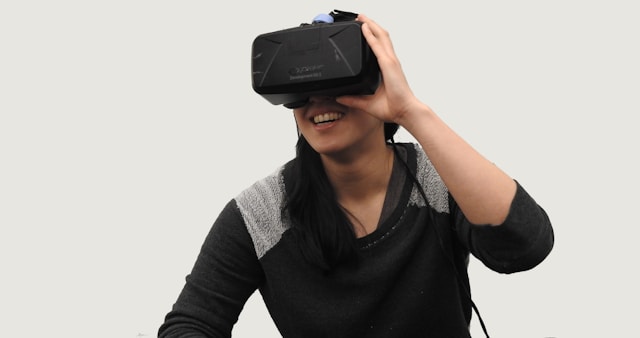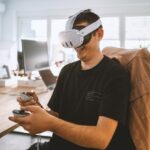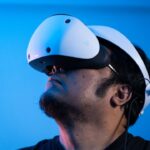How Virtual Reality transforms the lives of disabled people
Table of Contents:
Most people still consider virtual reality to be a fun marketing tool, perfect for gaming and entertainment. Many industries use the latest VR technologies to increase sales, build chemistry with users, create brand awareness, and attract potential customers. However, we should all be aware that virtual reality has the potential to enhance and assist the lives of disabled people. The potential applications for medicine and healthcare are endless as they open up new worlds and experiences. How can people with disabilities come along for the ride? How can virtual reality be relevant for accessibility?
How is virtual reality changing the everyday lives of disabled people?
According to the US Center for Disease Control and Prevention, 25% of US adults have a disability that ‘impacts major life activities’. This means that there are approximately 61 million disabled people in the United States. Usually, these are people aged 65+. All research shows that the US society is an elderly one – by 2030, people 65+ will make up over 20% of the entire society, which means that statistically, there will be more people with disabilities in the future. The latest innovations in the field of virtual reality have shown that VR can visibly enhance the experience of people with disabilities, mainly because VR offers them alternative forms of interaction. They are able to enjoy the world of virtual reality just as much as they enjoy the real world. Those with autism or social anxieties, for example, are offered comfort and safety in virtual experiences. The visually impaired can discover things which they are unable to access in the real world. Virtual reality enables people with disabilities to perform activities it would otherwise be unsafe for them to do. It can also help people with certain impairments to learn new skills. At the moment, there is an unlimited number of ways virtual reality can change the everyday life of disabled people and help them develop new skills and functions.
Virtual reality shows disabled people the way in their everyday lives
The first and the simplest example of how VR can help such people is with planning accessible routes around the city or bus stations in advance of a trip. This is a huge step towards increasing safety and, at the same time, reducing anxiety. Virtual reality allows disabled people to get an idea of what an environment could be like in advance of visiting a new place. Let’s be honest – visiting new places is usually extremely hard for disabled people, for example, in the case of wheelchair users, who don’t know whether a new destination will be accessible for them before arriving. This causes stress, anxiety, and confusion. Virtual reality offers an easy solution to this where people with disabilities can explore the world and discover new places before travelling to them, thus expanding their knowledge, developing new attitudes, and building the confidence to travel and discover new destinations. In addition, shopping mall owners can use virtual reality to plan their spaces to make them as inclusive and accessible as possible to all their customers.
Virtual reality for a quicker recovery
Virtual reality has turned out to be very useful in helping people who have had a stroke or injury. The technology can help stroke survivors to recover the use of impaired limbs. It can be used to promote brain plasticity and develop neural pathways for performing bodily functions again. Virtual reality has been proven to improve motor skills and aid muscle recovery. If a person imagines doing an activity, the relevant parts of the brain needed to do that movement are stimulated. With this technology, there is a chance that paraplegics might be able to walk again. Their muscle memory can be partially recovered, and there is even a project aimed at creating a brain-machine interface that will allow patients to control their legs and regain mobility.
Virtual reality offers the potential to try new experiences
Virtual reality provides a chance for disabled users to explore new worlds and try new experiences. It allows people with disabilities (especially motor disabilities) to virtually overcome certain physical limitations, for example, users with muscular dystrophy who use wheelchairs. With VR, they can experience something they never thought possible, like climbing or surfing. Immersing them in a virtual world can improve their quality of life and open up new possibilities, providing a gateway into novel and exciting experiences. People with motor disabilities are often excluded from certain experiences but virtual reality gives them the opportunity to enhance the recovery process and improve their lives. Climbing Everest, skateboarding, swimming in the ocean, perhaps for the first time – virtual reality is considered a real breakthrough that could change people’s lives forever. On top of experiencing new things, virtual reality can also be used to provide virtual training for people ‘new’ to motor disabilities. Those who have just started using a wheelchair can practice navigation and learn how to use it more easily and conveniently. Finally, as already mentioned above, virtual reality is proven to help people with motor disabilities in physical rehabilitation programs.
Virtual reality helps people with visual impairments
Let’s start with users with low vision. Those who have tried virtual reality admit that the technology has enabled them to see more clearly than in reality. It works for people with the hereditary disorder retinitis pigmentosa, for example – their vision becomes closer to normal than ever before. People who are legally blind can experience VR games and movies. They can enjoy playing video games through the use of audio from characters and the surrounding environment, as well as haptic feedback. People with Stargardt disease (a reduction in detail of the center of the sufferer’s vision) can see images more clearly than ever before. How does VR work in such cases? Firstly, VR goggles are very close to the eyes, so the virtual scene can be magnified by filling the user’s field of vision. Secondly, the automatic gain control can be brought up to help keep the device contrast at a constant level. Finally, virtual reality experiences often use bright and bold images and text, making them much clearer than real life. Virtual reality’s ability to target each eye individually also has its benefits, for example, to help cure amblyopia, commonly known as a “lazy eye”.
Virtual Reality for people with cognitive disabilities
Virtual reality solutions can be used to give more people an idea of how a person with cognitive disabilities functions. This is great for creating awareness as very often we just cannot understand the condition of those with autism, epilepsy, or Alzheimer’s. They experience the world in totally different ways – different from people without cognitive disabilities. Understanding how they see the world might be crucial for businesses that aim to build accessible spaces etc. And from another perspective, virtual reality can really make the lives of people with cognitive disabilities better and easier. People with Asperger’s can practice social skills or have fun in a non-threatening environment, and autistic children can be taught how to function effectively in the real world with basic things like crossing a road (without the danger of being hit by a real car). In short, virtual reality creates role play environments that put disabled people in scenarios they might experience in the real world so that they can practice real-world skills in a safe environment. It has already become one aspect of effective therapy for people with special cognitive conditions. It has been proven to help increase patients’ memory skills and cognition and, together with cognitive behavioral therapy, VR can help reduce phobias and anxiety among people with autism and those with social difficulties like Asperger’s syndrome and other conditions.
Summary
For some disabilities, virtual reality can make huge changes, particularly those with cognitive and motor disabilities, and it can really make people’s lives easier. What’s more, virtual reality can also be used to present their world to others; individuals and businesses who, as a result, will better understand their needs and limitations. Virtual reality has certainly become more prominent in this area, and the trend is set to continue and grow into the future. Check also the article about VR technology and the fight against chronic pain.
How can virtual reality be relevant for accessibility?
Virtual reality can be relevant for accessibility as it offers alternative forms of interaction, making it possible for people with disabilities to enjoy the world of virtual reality just as much as they enjoy the real world. VR technology can help those with autism, social anxieties, or visual impairments, discover new things they are unable to access in the real world. It enables people with disabilities to perform activities that would otherwise be unsafe for them to do, and also helps them develop new skills and functions..
How is virtual reality changing the everyday lives of disabled people?
Virtual reality is changing the everyday lives of disabled people by offering them alternative forms of interaction and enabling them to perform activities that would otherwise be unsafe for them to do. VR technology helps people with disabilities discover new things they are unable to access in the real world and learn new skills, which enhances their quality of life and opens up new possibilities for them.
How can virtual reality be used for physical rehabilitation?
Virtual reality can be used for physical rehabilitation by promoting brain plasticity and developing neural pathways for performing bodily functions again. It has been proven to improve motor skills and aid muscle recovery, and can be used to help stroke survivors recover the use of impaired limbs. VR technology can also help people with motor disabilities practice navigation and learn how to use a wheelchair more easily and conveniently.
How does virtual reality help people with visual impairments?
Virtual reality helps people with visual impairments by providing an opportunity for them to experience virtual worlds and try new experiences. It allows people with low vision to see more clearly than in reality and experience VR games and movies. People with Stargardt disease can see images more clearly than ever before. VR technology works by using VR goggles, which provide haptic feedback and audio to enable users to interact with the virtual environment.

Author: Rafał Siejca
Rafal has over twenty years of corporate experience, including roles at Millennium Bank, Comarch, and leading software teams at PZU, one of Europe’s largest insurance companies. As one of Poland’s few true VR experts with a decade of experience, he ensures timely, high-quality project delivery as CEO and CTO.


